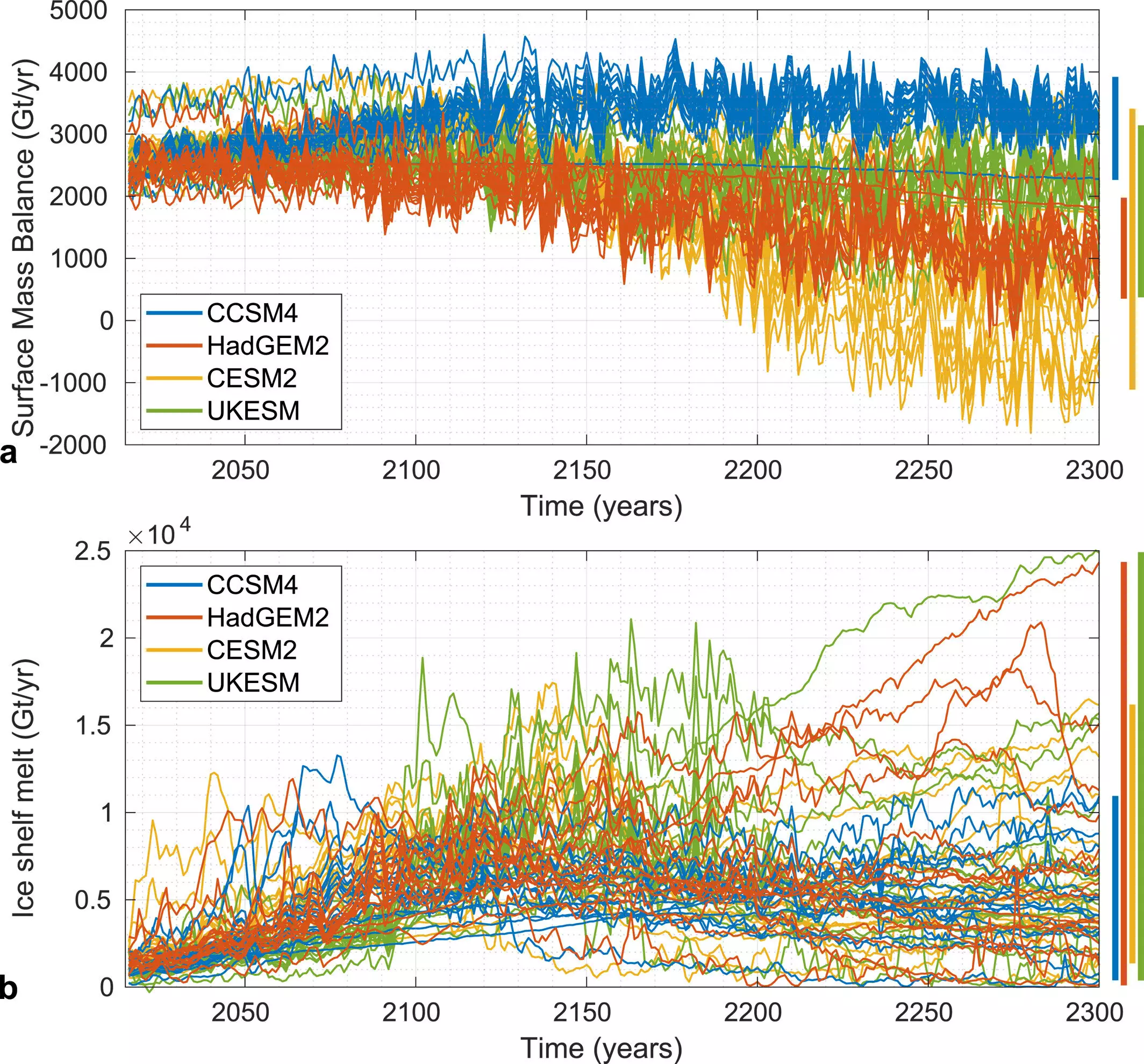Recent research spearheaded by Dartmouth College, involving a collaboration of over 50 climate scientists from around the globe, sheds light on the pressing issue of Antarctica’s ice loss due to carbon emissions. This landmark study, published in the journal *Earth’s Future*, offers critical insights into how the ongoing climate crisis could shape the future of one of the planet’s most significant ice reservoirs over the next three centuries. Through an extensive analysis of various ice-sheet models, the research team has produced unprecedented projections of the Antarctic ice sheet’s fate, emphasizing the impact of human activity on this fragile ecosystem.
Emissions and Ice Sheet Dynamics
The study draws attention to the correlation between carbon emissions and ice sheet dynamics. It concludes that while models indicate a gradual increase in ice loss during the 21st century, this trend may accelerate drastically post-2100 if current emission levels persist. The review of 16 different ice-sheet models reveals a consistent prediction: under existing emissions trajectories, substantial portions of Antarctica’s western ice shelves are expected to experience rapid retreat. By the year 2200, it is alarming to note that the melting glaciers could result in a global sea-level rise of up to 5.5 feet. This stark outcome underscores the urgent need for immediate action to mitigate emissions now, to minimize future impacts on sea levels.
The Uncertainty Beyond 2100
One of the study’s most significant findings lies in the uncertainty surrounding ice sheet behavior post-2100. Although models agree on patterns for the current century, their divergence becomes pronounced when examining projections beyond 2100. Helene Seroussi, the study’s lead author, emphasized that existing climate discussions predominantly focus on the short-term impacts of sea-level rise. Yet, the research illustrates that the long-term implications, particularly for areas vulnerable to significant flooding, become increasingly critical beyond 2100. The varying estimates prompt a need for policymakers to pay heed not just to immediate effects, but also to the slower-moving, yet equally catastrophic consequences that lay ahead.
Additional insights from the research highlight the stark differences between high- and low-emission futures. The authors modeled predicted outcomes for Antarctica’s ice sheet given contrasting emission scenarios and found that while the effects of current emissions seem somewhat contained through the century, the gap widens dramatically post-2100. With projections pointing towards a concerning potential for a near-total collapse of the Antarctic ice sheet by 2300 under high-emission pathways, the findings support the urgent narrative that immediate global action to cut carbon emissions is imperative for the well-being of future generations.
Notably, while there exists variability in the timing of the ice retreats based on the models deployed, the speed at which these retreats can occur once they begin is a consensus across all models assessed. Large portions of West Antarctica risk significant collapses as early as 2200 under current trends, highlighting an alarming point of no return that may soon be upon us, depending on future greenhouse gas emissions. As Seroussi succinctly put it, proactive steps must be taken promptly if we aim to avert catastrophic loss in these crucial basins.
The Path Forward
This study serves as a catalyst for further collaborative research initiatives aimed at refining climate models and resolving uncertainties in projections for vulnerable geographic regions. Additionally, there is a strong call for increased focus on examining the future of the Greenland ice sheet, which also faces substantial threats. By pooling research resources and insights, scientists can clarify and enhance understanding of the most likely scenarios, ultimately improving preparedness for what lies ahead.
As the research delineates, the nuances of Antarctica’s ice dynamics essentially hinge on our collective response to climate change today. The forecast may be dire, but recognizing the gravity of our actions can steer the global community toward sustainable solutions and preservation efforts that could greatly influence the health of our planet’s ice-laden regions in the centuries yet to come.

